














Welcome to the July edition of Digital Innovation Magazine!
We hope you’re all having a fantastic summer so far.
For this month’s cover interview, we speak to Michael Späth, Regional VP, DACH at Aera Technology about the company’s mission to revolutionise decision-making with innovative technology solutions to help businesses transform their enterprises (p6).

We also sit down with Nadine Hessel, Global Director for Supply Chain & Infrastructure at FläktGroup to learn more about the company’s innovative technology and supply chain strategies as a global leader in the indoor air quality industry (p38).
In our tech features for July, we present three useful guides on how to deploy the Metaverse for growth and efficiency (p52), futureproof your AI strategies (p78) and secure carbon-neutral status (p88).
The Viva Technology annual technology conference took place last month in Paris and we share insights from the LVMH Innovation Award, speaking to the organisers and overall winners Save Your Wardrobe about the biggest takeaways from the event (p66).
The Digital Innovation team attended the Money20/20 Europe in Amsterdam last month and we recount highlights from the three-day event where some of the biggest names in financial services, fintech and payments gather to network and share ideas (p24).
Last but not least, our Startup of the Month is Destinus – a Swiss aerospace company looking to transform the future of air travel with groundbreaking hydrogen-powered aeroplanes (p98).
We hope you enjoy our latest edition. As always, if you would like to be considered as an interviewee or if you have a story for us, please do get in touch.
6
We sit down with Michael Späth, Regional VP, DACH at Aera Technology
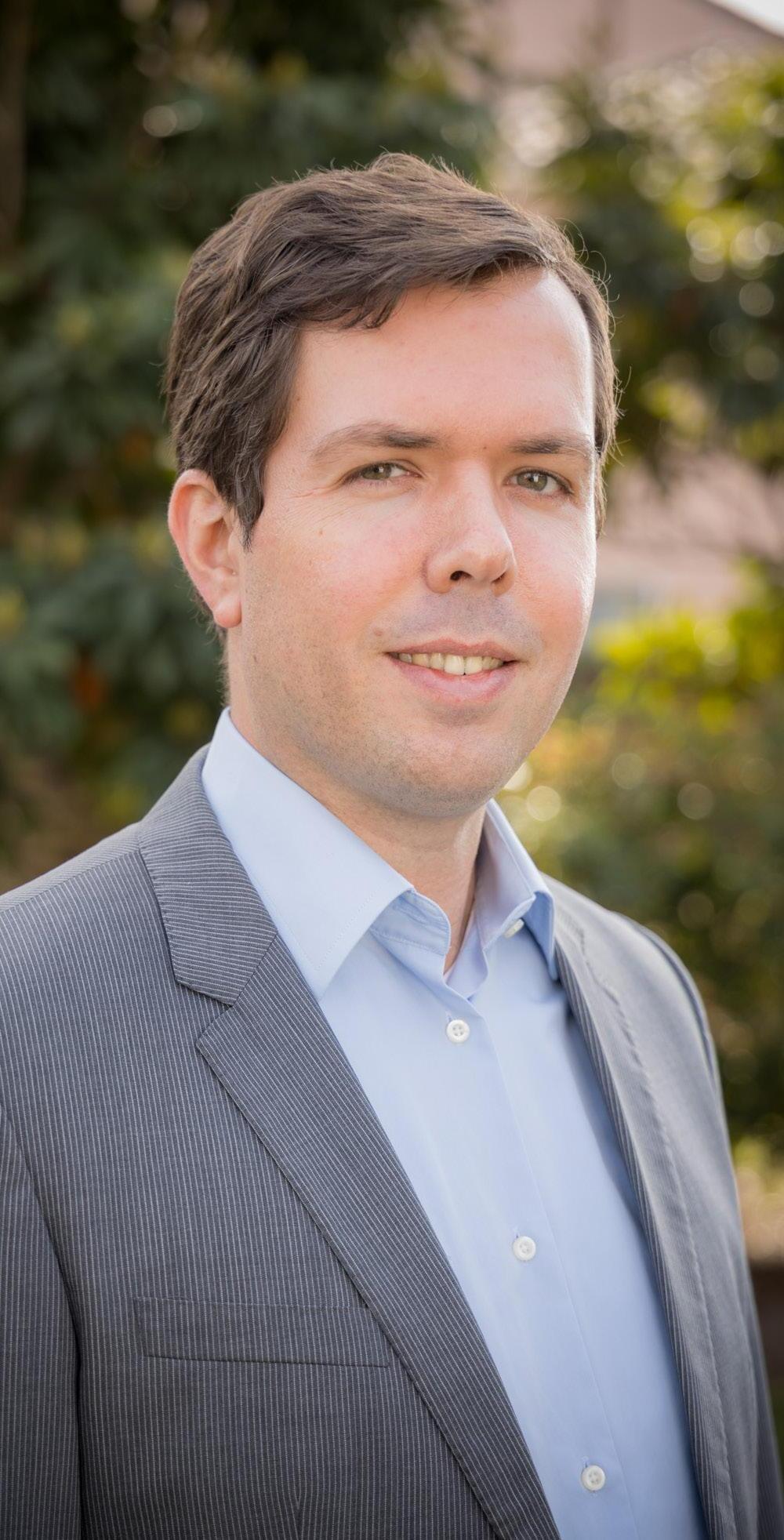
78
Futureproof your AI strategies with our handy guide
How your business can deploy the Metaverse steps

88
Follow our roadmap to carbon-neutrality



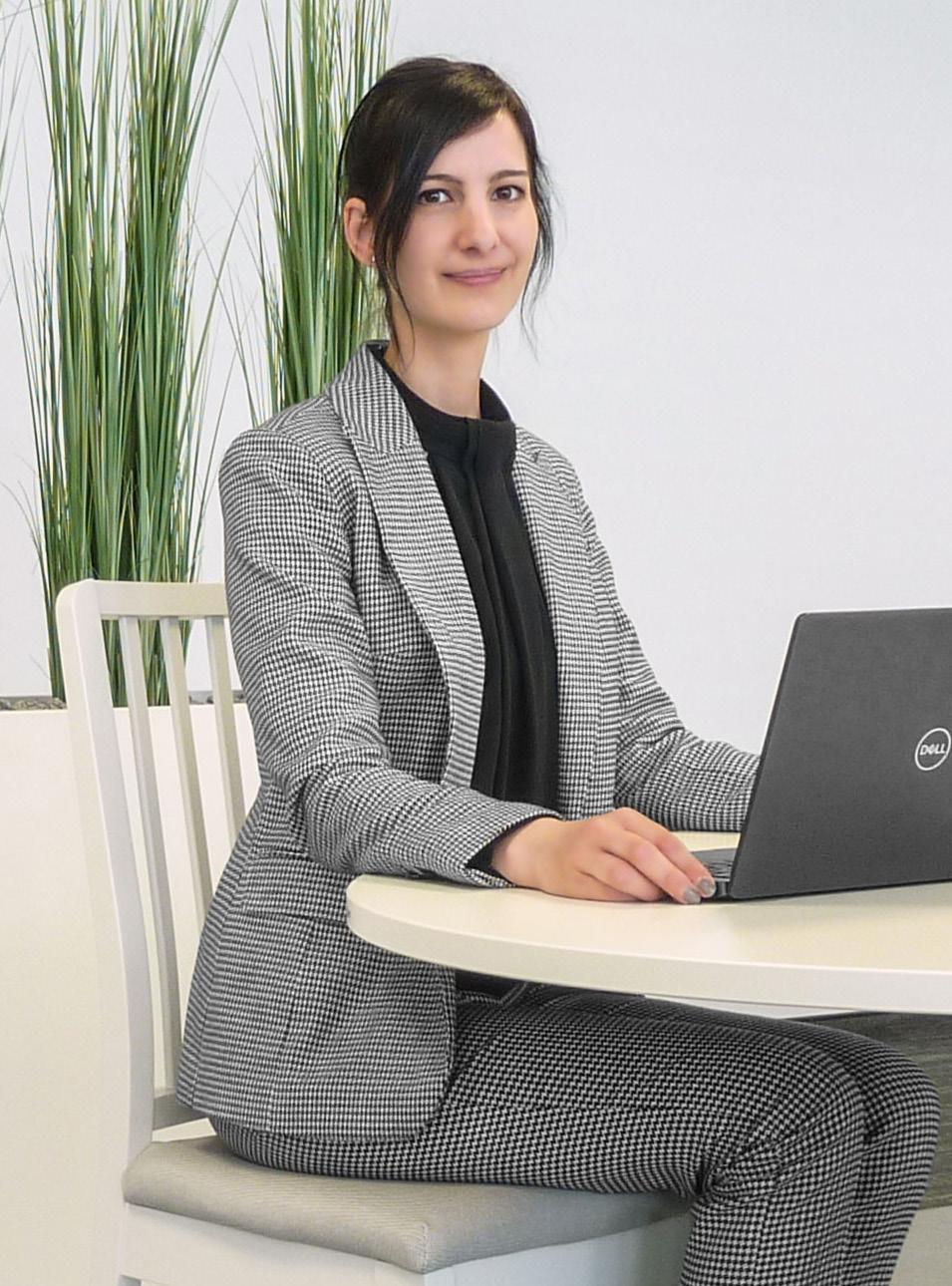

Michael Späth, Regional VP, DACH at Aera Technology, champions the transformative power of Decision Intelligence.


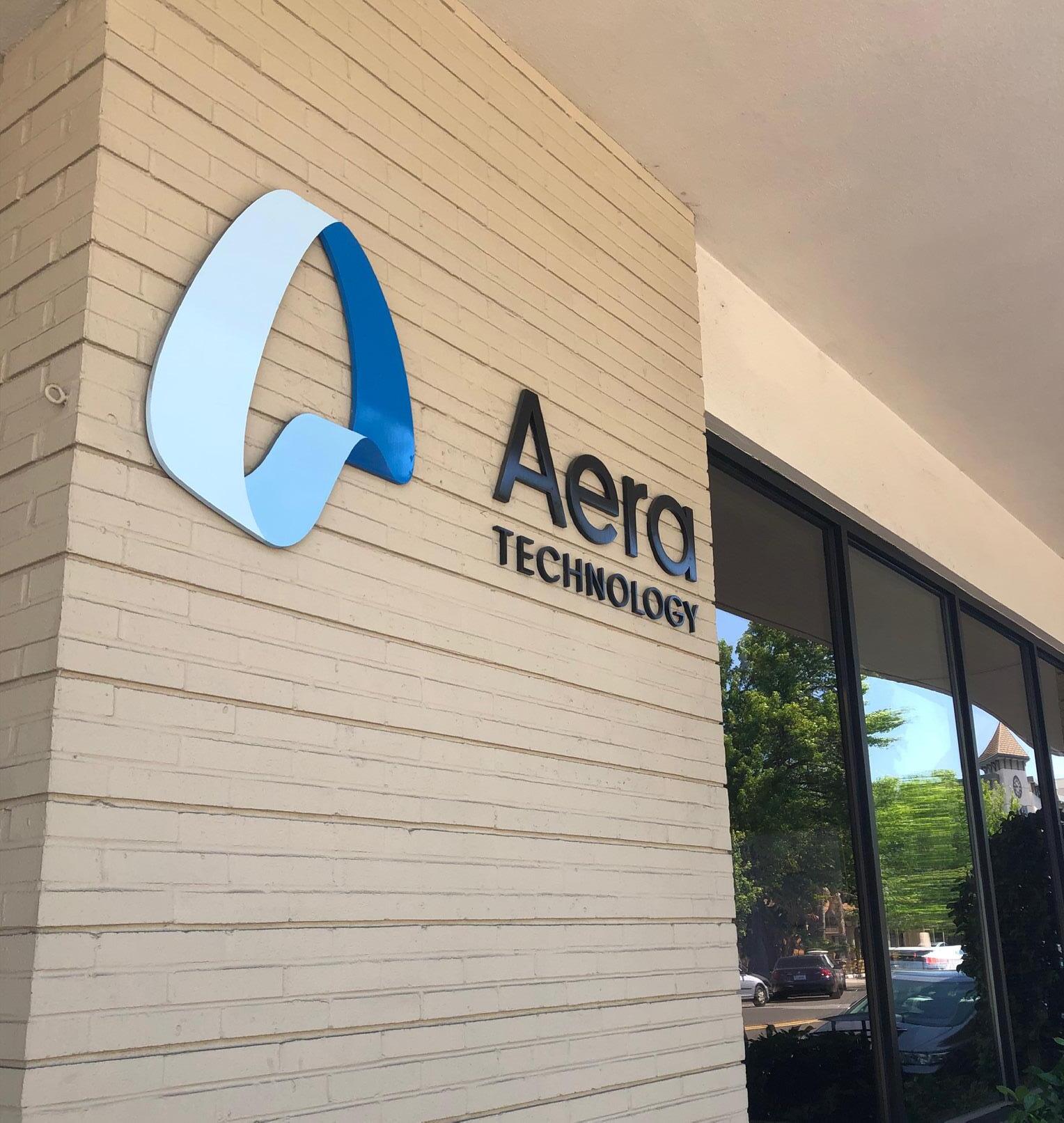

When they launched the company in 2017, the founders of Aera Technology had a clear vision: they wanted to revolutionise decisionmaking using innovative tech solutions and help businesses transform their enterprises.

rawing on many years of experience in enterprise software, specifically within the space of performance improvements and business intelligence, the founders always felt something was missing.
Aera Technology is on a mission to address this gap in the market and make companies
wildly successful by helping to make their operations more sustainable, intelligent and efficient. Delivering an AI and machine learning-powered platform that enables Decision Intelligence, Aera Technology helps businesses streamline and autonomously orchestrate their operations.

Here to discuss the company’s Decision Intelligence platform and how they can help businesses adapt to pressing supply chain demands is Michael Späth, Regional VP, DACH at Aera Technology.

Michael begins by explaining how the pace of market changes and volatile environments companies are operating in, combined with the complexity and scale of globalisation, means that businesses are
“After building the foundation, on top of that you need to have what we call the intelligence pillar, which is then the set of capabilities that you use to codify and model decision-making”
Michael Späth, Regional VP, DACH
struggling to make sense of all the data before them.
“The idea here is that if we can build assistance, at scale, that provides recommendations on decisions which liberate a lot of time people would spend on very complex, or very menial, tasks,” says Michael. “In doing so, we remove the pressure to deal with easy problems, allowing people to focus on the more valueadding tasks and the tougher problems that companies have to deal with.
“The fundamental idea is that human factors will always be paramount to any company: the human intellect and the human intelligence. But unfortunately today, in many cases, human intelligence is being used for things that machines can do a lot better and a lot more precisely. We're not even relying on people for what is truly uniquely human. And that's where we are as a company –we seek to support people with our platform by enabling companies to do what they do best.”
Michael breaks data-driven, digitised decisions into four pillars.
First, companies need a foundation to build upon. “You need to have the data harmonisation and the data wrangling capability at scale,” explains Michael.
“This includes connecting to enterprise systems of any shape or form, but also connecting into data sources from the outside world and bringing it all together into a single data model. That’s the foundation.”
“After building the foundation, on top of that you need to have what we call the intelligence pillar, which is then the set of capabilities that you use to codify and model decision-making,” says Michael. “You start with simple rule-based decisions, but then you can start mixing in advanced AI-optimised algorithms with simulation.”
The third component is what Aera Technology calls the ‘engagement layer.’
So, what does Aera Technology’s Decision Intelligence platform offer in terms of technology, capabilities, applications and results?
“We understand that when people are not accustomed to working with these advanced
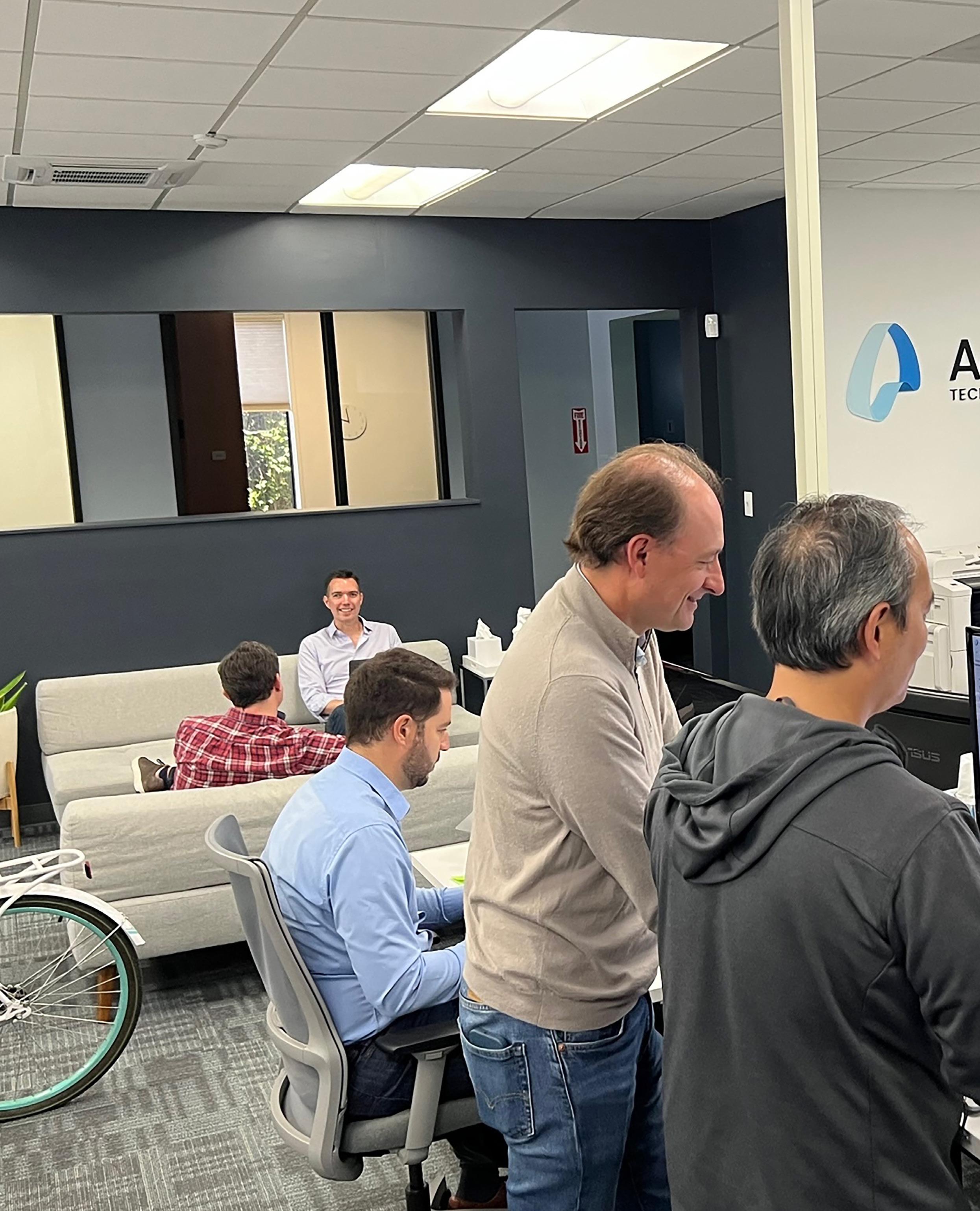
algorithms, the fundamental problem to crack is trust,” says Michael. “How do you deliver a recommendation to a user? How do you explain that recommendation so that users understand how the platform arrived at this course of action? Are users able to modify these recommendations when needed before moving to execution?
“And how do you create a user experience that is gratifying so that people enjoy engaging with the software, and capture the feedback users give? This step is vital because leaders need to understand how users are interacting with the platform and its recommendations.”

“Our platform is robust and it's more a question of where you deploy it, and this really depends on the level of maturity of a company”
The final pillar is around acting and learning, enabling decision automation.
“We understand that when people take decisions, there's still a lot of work that happens after the decision,” says Michael. “There's the work of actually making sure it gets implemented and executed, often by manually updating transactional systems or even spreadsheets, before people can start to track whether the decision is delivering on the expected outcome.
“The whole capability to automate and to learn from decisions is the final pillar of the platform,” he summarises.
“We've been building use cases with Decision Intelligence across various business domains,” responds Michael. “We have a heritage in supply chain and operations management. We’ve also explored a few use cases across procurements, both
operational procurements and strategic procurements. More recently, we're getting heavily into the space of revenue management – which covers things such as dynamic pricing, but also more importantly how companies measure and manage marketing spend.
“When large companies run campaigns on social media to promote particular products, we help those companies ensure that they have enough product available to meet the generated demand.
“We’ve also done quite a bit of work around optimising service levels. Here, our platform drives additional top-line revenue. We have several customers telling us that we've actually delivered up to 3 per cent additional top-line revenue through the increased service levels we can offer them.
“We have other customers focusing more on networking capital optimisation, which might be in terms of reducing inventories, or reducing accounts receivables and accounts payables. Doing so has freed up significant working capital for these companies totalling hundreds of millions of dollars.
“Many of our customers are speaking about the cost of unmade decisions. We like to focus on that area because there’s a massive opportunity that companies are not tapping into today”
“Lastly we have several customers, for instance in procurement, that have been looking to optimise spend, and our recommendations have accomplished this to the tune of tens of millions of dollars.”

“But the real beauty of Decision Intelligence is that it's not so much about optimising the decisions that are being taken today,” explains
Michael. “It's actually about taking the decisions that are not being taken today.
“Because of the velocity of business today, there are so many demands being placed upon decision-makers, planners or procurement operators that they simply don't have the time or bandwidth to address all the issues they would need to deal with on a daily basis. Many of our customers are speaking about the cost of unmade decisions. We like to focus on that area because there’s a massive opportunity that
companies are not tapping into today.”
Focusing on the supply chain in particular, Michael highlights several pressing demands facing the industry where Aera Technology’s platform enables and empowers businesses to thrive.

Michael addresses the elephant in the room: the massive disruptions caused by the COVID pandemic. But he emphasises that the implications of the pandemic and national lockdowns are actually a spike in a broader trend of
increasingly shorter cycles of globally disruptive events.
“The rate of massive disruptions to supply chains has been increasing when you contemplate events on a longer horizon,” says Michael. “They used to happen every three years. Now, we're down to 14- or 12-month cycles where things really get mixed up. The old way of working, where you have an inflexible process model on an underlying ERP or planning system, is just not agile enough because there are so many new situations that people have to deal with.
“Today companies try to work around the corners with data, spreadsheets or visuals and try to make the best decisions they can. But at the scale of a global, multinational company, it's just impossible to take that level of decisive action on every single issue.
“We help companies to better sense and anticipate demand challenges, not just around forecasting but also around responding in real time to things occurring in the market.
“Our platform harmonises data across the ecosystem, then applies AI and ML to model scenarios and predict the best solution options – which could consist of inventory deployments, sizing order allocation or a host of other challenges. We also seek to help customers shape their demand by coupling marketing spending to supply.
“Then we also seek to work towards the upstream supply chain, which is really around the procurement side. For example, if the platform identifies that a customer is still buying materials that they’re not going to be able to sell, then it notifies them with a recommendation to stop buying materials.
“We focus a lot of effort on wastage avoidance, which is a growing concern and a very visible issue for
“To help businesses get from A to B and deploy Decision Intelligence, Aera Technology relishes the chance to work with valued technology and data partners in areas of growth and operations”
consumers as well as investors. Customers that are working with us seek to synchronise their endto-end value chain so that they reduce obsolescence and avoid destroying materials, which in turn has obvious benefits for the environment.”
From decisions which avoid waste to those which free up working capital, the ability to take more decisions, more quickly and accurately, is transformative.
Beyond helping businesses to lean into challenges facing their supply chains, Michael emphasises that Decision Intelligence enables companies to instigate, and achieve, true digital transformation of supply-chain decisionmaking.
“The traditional view of supply chain has always been, ‘Let's get our basics and our executional processes in order, then let’s deploy a next-generation planning system on top of that to make sure that we do good planning,’” explains Michael. “However, if you plan, let's say on the weekly cycle
or a monthly cycle, in reality, the minute after you publish the plan, it is out of sync with reality. That disconnect is immediate because your operations won’t consistently deliver on the plan, and also because for many companies there's actually a great deal of volatility in their operations. This can be on the customer side, but it's often also on the supply side of operations.
“This is where we can change the game with Decision Intelligence,” emphasises Michael. “We not only have state-of-the-art technology powered by AI and machine learning, we also bring the expertise and deep knowledge of industries to truly improve decision-making processes in supply chain and across different functions.”
To help businesses deploy Decision Intelligence, Aera Technology relishes the chance to work with valued technology and data partners in areas of growth and operations to continue serving their customers and elevate their success. But in particular, Michael highlights the importance of Aera Technology’s work with consulting partners.
“Our goal is to help businesses with building a decision-making ecosystem and leveraging our partners to help deliver value quicker and focus on that scaling component because the foundational work by Aera Technology has already been laid”

“The journey with Decision Intelligence is foundationally a transformation to the way of working,” says Michael. “It's going from people doing the
work supported by machines, to machines doing the work guided by people.
“In this new paradigm, companies are going to be relying on knowledgeable people who
will engineer the system and enable the enterprise to run in a smoother, more agile manner.
“That's a big change, and this is where consultants and partners like EY are paramount because it's fundamentally a transformation of how companies run their
to fully realise the benefits of Decision Intelligence on their own.
“Companies like EY have a massive footprint. Of course, they do consulting – but they often lead the way with other crucial considerations like tax
businesses. There's a lot of design work, change management and onboarding enablement training, and there's also a lot of delivery work that must be done.
“By working with partners like EY, we always strive to enable our customers and our shared customers to be self-sufficient. We'd love to see our customers establishing centres of excellence where they build their own Decision Intelligence capabilities. Our consulting partners are truly paving the way to get there by helping our customers accelerate in the early days, run massive programmes and build the set of capabilities that companies need
work, handling transactions and much more. So they have a unique value that they can bring into companies for them to run decisions at scale.
“If you think about why consultants are being contracted today, it's because they have a set of specialised knowledge that companies don't retain themselves in-house around a very particular problem, needing a set of specialised knowledge to solve. Now if you could codify that knowledge, which consulting companies like EY are actually doing, they could provide that knowledge as a software service into the operating system of
“By working with partners like EY, we always strive to enable our customers and our shared customers to be self-sufficient”



the business, to allow them to scale and have that knowledge embedded into the way they take their daily decisions. This is really where the most exciting and innovative collaboration potential comes into play.”

So, what does the future look like for Aera Technology in the coming years?
“We're proud to work with some of the largest, most renowned companies in the world, particularly in consumer products, pharma, life sciences and chemicals,” says Michael.
“We want to become touchless in the sense that companies can go on their own journey, they can make use of all the content that we deliver – but they can take it from there to solve their own unique problems. Because what really constitutes the competitive advantage of a company is the unique set of knowledge and experience that belongs to the people who are running the business from day to day. Ultimately, to make the business succeed, they need to learn to codify their unique knowledge into a system that can help at scale.
“Our goal is to enable Decision Intelligence for business users, to provide them a platform that will empower them to automate decision making at scale.”

Wrapping up our conversation, Michael reiterates that five years ago when he joined Aera Technology he spent the majority of his working week preaching the importance of Decision Intelligence because it was a new idea. He welcomes the fact that today, more and more companies spanning multiple sectors and industries are embracing Decision Intelligence in their strategies and discussing its enabling potential.
“It’s amazing to see how our vision has become part of the shared understanding of practitioners in global markets,” says Michael. “With Decision intelligence, we can move beyond incremental progress and thrive with exponential improvements which will be foundational to achieving what we need to do as a world: to become more sustainable, intelligent, and efficient across every industry, and to continue to innovate towards progress.”
To learn more about Aera Technology, visit their website www.aeratechnology.com.
We

Money20/20 Europe in Amsterdam last month.



FOUNDED IN 2011, MONEY20/20 CREATES DESTINATION SHOWS WHERE THE MOST INNOVATIVE PEOPLE IN PAYMENTS, FINTECH AND THE BROADER FINANCIAL SERVICES INDUSTRY CONNECT.

amed for its high-impact networking, the Europe edition was recently held in Amsterdam from June 6-8, 2023.
The Digital Innovation team had the pleasure of attending Money20/20 Europe again this year, with Scott Roofe, Project Director and Tom Barnes, Managing Director heading to the event.
Here we run through some of the biggest moments at Money20/20 Europe 2023 and hear from Scott and Tom about their takeaways from the event.
The event started at a gallop and we kicked things off by hearing from some of the biggest names in the industry. Our highlights?
Ex-Twitter exec Dr Rumman Chowdhury, Responsible AI Fellow at the Berkman Klein Center for Internet & Society at Harvard University, shared her fascinating experience in creating the first-inindustry algorithmic tool to identify and mitigate bias in AI systems,
alongside how she led her team of applied researchers and engineers at Twitter to identify and mitigate algorithmic harms.
Lily Cole, Model, Actress and Entrepreneur sat down with Tracey Davies, President of Money20/20,

for a thought-provoking discussion about whether increased awareness of societal touch points sparks business initiatives that align revenue with purpose, improve employee mental health and further societal well-being.
Uri Levine, Founder of Waze and the first board member and investor at Moovit, elaborated on the best ways to build a startup, shared some top tips for entrepreneurs and offered his predictions for what lies ahead in the industry.

“LILY COLE, MODEL, ACTRESS AND ENTREPRENEUR SAT DOWN WITH TRACEY DAVIES, PRESIDENT OF MONEY20/20, FOR A THOUGHT-PROVOKING DISCUSSION”
Scott and Tom were, of course, expecting the topic of AI to loom large at Money20/20 Europe. But AI dominated the event in more ways than one. Beyond commanding conversation topics, Money-Bot, the 12ft AI-powered robot, towered over attendees providing entertainment, games, pitching and even hosted the evening’s first networking event.
On Wednesday 7 June, we watched determined startups pitch their way to the final of Europe's Got Access for their chance to receive a $100,000 uncapped SAFE note by Commerce Ventures. ZeroLabs, a renewable energy-focused SaaS, took the prize in the pitch battle for climate fintech startups.

Jack Zhang, CEO of Airwallex, addressed what drives hypergrowth for companies in 2023. During his conversation with Ingrid Lunden, Managing Editor at TechCrunch, he offered insights into how the company is thriving in the current market but also planning to grow in the borderless, digital economy.
Showcasing how incumbents can collaborate with
newcomers, Hiroki Takeuchi, CEO of GoCardless, and Mark Brant, Chief Payments Officer at NatWest Group, discussed their collaboration to make Variable Recurring Payments (VRP) available to businesses and consumers, alongside their common focus on customers.
Scott and Tom thoroughly enjoyed the Money Street Fest to wrap up the second day of the event. The team had a blast flitting between the restaurants, bars and popup disco for a tremendous networking experience in one of the most diverse and culturally significant streets in Amsterdam.
After the hustle and bustle of Days 1 and 2, attendees and speakers showed no signs of slowing down for the final day of Money20/20 Europe.

Dan McCrum, Investigative Reporter at Financial Times, sat down with Zach Anderson Pettet of Money20/20 and Prove Identity's fraud and cybercrime executive advisor Mary Ann Miller to unpack how Dan broke the bizarre tale of Wirecard. The company was touted as the
German alternative to PayPal but it transpired Wirecard was a huge money laundering scheme.
Ali Niknam, Founder and CEO of bunq, explored whether we are entering a healthier, more sustainable chapter in finance and the role of neobanks in the future. He spoke about choosing the best

approach to profitability and how leaders can show their true colours, transform their business and become more resilient and sustainable in the process.
So, what were the major takeaways for the Digital Innovation team?


“THIS YEAR’S MONEY20/20 EUROPE EVENT WAS EXCELLENT. THERE WERE SO MANY INTERESTING PEOPLE TO TALK WITH, AND UNIQUE AREAS TO MINGLE AND NETWORK IN”
Scott Roofe, Project Director at Digital InnovationTom Barnes, Managing Director at iThinkMedia
Scott Roofe, Project Director at Digital Innovation had a fantastic time rubbing shoulders with some of the biggest names in money.
“This year’s Money20/20 Europe event was excellent,” said Scott. “There were so many interesting people to talk with, and unique areas to mingle and network in – especially the casual setting of the beach bar! The atmosphere was one of excitement and collaboration.

“My biggest takeaway was the acceptance of crypto and blockchain as the new standard, and found more people already working towards it, or already involved with it, than I thought there might be. I especially had great discussions with people from Ripple and GoCrypto. I can’t wait for next year’s event!”
Tom Barnes, Managing Director at iThinkMedia – the publisher behind Digital Innovation and its sister publication CHAIN Magazine, said, “What an energising and exciting few days! Much like

“WHAT AN ENERGISING AND EXCITING FEW DAYS! EVENTS LIKE THIS ARE SO IMPORTANT BECAUSE THEY PRESENT VALUABLE OPPORTUNITIES TO NETWORK, EXCHANGE IDEAS AND BUILD NEW RELATIONSHIPS”
last year, the networking was fantastic, the conversations were stimulating and meeting some of the most innovative and successful companies from around Europe is always a tremendously rewarding experience.

“I particularly enjoyed chatting with Tristan Thoma, Director of Product, Government & Payments at AlphaPoint all about their innovative financial technology solutions, changing the game for institutional operators by providing access to digital assets and cryptocurrencies globally.
“For me, the ever-burgeoning presence of technology and innovation within financial service provision continues to impress me. Each year, companies are bringing out new solutions and services to meet their customer's needs – but also the demands of the industry. Events like this are so important because they present valuable opportunities to network, exchange ideas and build new relationships.”
We look forward to seeing you there next year!











"The team were professional and diligent throughout"
Leigh Feaviour, CTIO for BT’s Supply Chain
"Absolute pleasure working with the Digital Innovation team"


Mun Valiji, Chief Information Security Officer at Sainsbury’s
"A highly professional approach"
Andy Brierley, Vice President, Cloud Application Modernisation at IBM
"Digital innovation Magazine is a very flexible and professional team"
Kim Larsen CTIO, T-Mobile Netherlands
Nadine Hessel, Global Director for Supply Chain & Infrastructure at FläktGroup discusses the company’s innovative technology and supply chain strategies as a leader in the indoor air quality industry.



he name stems from ‘Fläkt’ – the Swedish word for ventilation, an integral part of the company since its original inception in 1909.
FläktGroup was formed in 2016 when Fläkt Woods joined forces with DencoHappel (formerly part of the GEA Group) to become a market leader for energy-efficient Indoor Air Comfort and Critical Air solutions serving a global market.
We sat down with Nadine Hessel, Global Director for Supply Chain & Infrastructure to discuss
the supply chain strategy and innovation at FläktGroup.
Nadine begins by explaining how the company takes a holistic approach to their operations since they cover all stages from design and manufacturing products to delivery, after-sales and servicing provision.
“You can find our products everywhere – in commercial buildings, residential buildings, industrial buildings, and critical applications like data centres,” says Nadine. “We


have 13 production sites, 3,500 employees and we sell in 65 countries around the world. I’m responsible for the supply chain and infrastructure in our business area Services. My main focus is the global availability and storage of spare parts within our service supply chain. This is a bit different from the manufacturing supply chain as the sourcing is not only build and buy, but you can also repair a unit or secure replacement parts.”
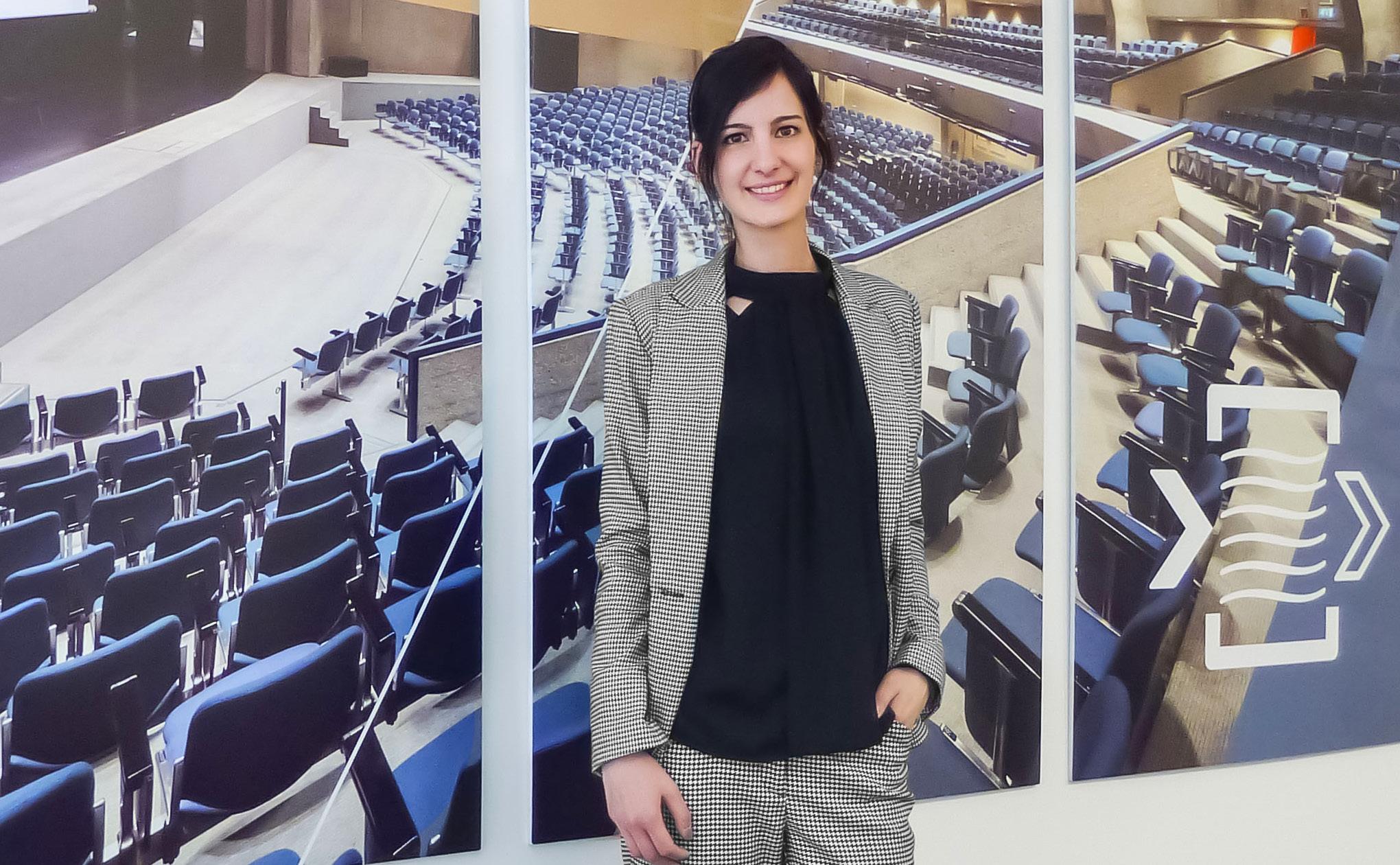
Nadine describes how the approach to the service supply
chain today looks different to the provision offered in the past.
“For us, we need to focus on all components of the supply chain,” explains Nadine. “All aspects provide room for improvement. So if we start with planning it has always been important, but it has shifted from planning for just-intime delivery or just-in-case delivery for service, to now even getting components at all. So it's quite different from the way it used to be. We try to have inventory buffers on the one hand, and on the other hand, we seek to find alternatives for missing components. But if there are some components with a lead
time of two years, the customer can't wait that long.
“So instead of replacing them one by one like we used to do, we try to find an alternative part if it's available. Consequently, one of the core components of our strategy is multi-sourcing. So, of course, we have our main suppliers and it's vital to keep our relationships strong with them. But I'm always open to getting in contact with new suppliers. So I have a lot of suppliers that reach out to me on LinkedIn for example. Usually I meet with them and listen to their propositions. Maybe they will have some components I can use. So that has changed.
“The important thing to note with FläktGroup is that we are a group of international companies put together through acquisitions. So growing together is a challenge for us. Therefore it's quite important within the supply chain strategy to take a global view. To find a component for an urgent service visit, for instance, I can check the stock in our factories around the world. I can ask them ‘What is your production stock like?’ and ‘Can I have that part?’ When you have high commodity availability, you can look at individual entities. But in today's situation, I think a global view is critical. So this has brought
us closer together within FläktGroup. We have cross-departmental support and always set a global strategy, even for small parts. I can always just look at all the stocks we have and find parts somewhere.
“What is special about the service supply chain is that the demand is not predictable. But it's a good thing because if it was predictable, it would represent bad news for product failures. There are some components that you can exchange and maintain on a service visit, but most of the demand levels for parts are unpredictable. But nonetheless, for me, it's important to have an overview of what we have sold to do some kind of forecasting when possible. So planning is still super important.”
At FläktGroup the company’s supply chain strategy hinges on embracing innovation and transformation to keep their operations and service
“My main focus is the global availability and storage of spare parts within our service supply chain”
Nadine Hessel, Global Director for Supply Chain & Infrastructure
www.wuerth-phoenix.com

info@wuerth-phoenix.com



Passionate about Dynamics 365, we believe in CRM projects as business accelerators for all companies. Dynamics 365 is a powerful cloud-based platform that offers a wide range of applications to help companies streamline their operations and improve customer relationship management. It already offers a number of specific solutions for sales and customer management. However, we aim to go one step further by introducing Sales+, a value-added feature that caters to the diverse needs of the sales force. Sales+ aims to optimise the daily operations of the sales force by enhancing functions such as offer and order management, article searches, price information, warehouse stock monitoring and automation of approval flows. By leveraging Sales+, users can significantly reduce processing times, minimise manual operation and boost their operational effectiveness.
Constant quality of IT services to support company business.
provision for customers at the leading edge of the air technology industry.
“Especially in a changing business environment, it's important to be flexible and open for innovation,” says Nadine. “I'm not only responsible for the supply chain, but for the infrastructure at FläktGroup as well. We combine those two things, which for me is fantastic because I love IT and bringing them both together. It's
with the benefits and then decide whether it's the right tool at the right time. Not all innovation is good innovation.
“But at the moment, digitalisation is super important for us and we aim to have user-friendly and efficient tools. Here, we have been working with Würth Phoenix for several years to introduce Microsoft Dynamics 365. I started to work with them on a sales project some years ago, and now
a strong combination because if I see there are some processes or systems we need to adjust, I'm then responsible for those changes as well.
“As a company we are always looking for innovation be it in technological terms or digitalisation. But on the other hand, you cannot follow every trend and we won't explore them just because they're hip. Instead, we will compare our experience
in my new role it’s a pleasure to work with them again on behalf of our service technicians. By working with Würth Phoenix, our service technicians can do most of their administrative tasks with a smartphone, say to record their hours or fill out service reports. Of course, many technicians within the group were able to do this before but as we are different companies put together, we used to have different systems. Now we would like to harmonise
“By working with Würth Phoenix, our service technicians can do most of their administrative tasks with a smartphone, say to record their hours or fill out service reports”
that into one global system for everyone.
“Another exciting technological innovation for our service technicians could be smart glasses they wear out in the field. That is one thing we are testing right now. Say the technician requires some support from the back office, their colleagues might need to see the unit as well to help them –especially with such technologically complex products. With smart
glasses, the technician can share exactly what they are seeing with their colleagues – crucially leaving both hands free to continue their work on the ground. In turn, back office staff can then share images, instructions or files with the technician from their end as well and the technician will see them clearly within the device on a small monitor.
“Another important aspect of innovation and transformation for

“We put QR codes on our unit and customers can scan it and find all details regarding their orders like manuals, spare parts lists – everything they need for the order”

FläktGroup is to make life easier for customers as well. So we have started working with QR codes. For example, we put QR codes on our unit and customers can scan it and find all details regarding their orders like manuals, spare parts lists – everything they need for the order. Additionally, we put QR codes on components, so our customers can find a list of contacts and know where to order a new part easily and quickly.
“Besides these QR codes, our customers can also make spare parts requests directly on our website. What’s more, we also have some units that offer remote access and we will be expanding this feature to benefit our customers and enhance the assistance we offer them. As I'm responsible for the whole service supply chain, this includes digital service provision and site visits. Remote access has been a gamechanger because it saves time and
costs for both parties, which is a fantastic innovation for us.”

Underlying the innovation and transformation at the company, Nadine highlights the importance of partnerships for FläktGroup’s supply chain strategy.
“So for us, strong and reliable partnerships are fundamentally important to our operations,” explains Nadine. “We are dependent on primary materials or components and our partners help us meet our requirements and support us in difficult situations. So even if there are lengthy lead times we can talk to our suppliers. If we don't have materials, we cannot produce units or parts. Without partners, there is no growth or success so partnerships are super important to our supply chain strategy and it all starts with the initial supplier. In turn we not only rely on the partnership with our suppliers, but we have to consider the relationships they have with their suppliers as well. Even if our suppliers have a high vertical integration, they rely on others at some point in their supply chain. As a result, it's crucial to share information. So if our supplier knows there are some parts that are at risk, but we know about that in advance, it's less of a problem because we can adapt

accordingly. So if you have partners, you have to share information and be open to each other. Sharing information is important but I also think it's a huge advantage to have partners who know your requirements. For instance with Würth Phoenix, we've been working with them for years. They know our processes, they know our businesses and they know our IT landscape – so they know what we need. Long-term partnerships are essential for our business.”
At FläktGroup innovation, transformation and robust partnerships built on transparent communications are the core components for achieving success with its supply chain strategy. But what are some of the major challenges facing supply chain professionals today that these approaches help offset?
“More and more challenges are coming our way,” says Nadine. “At first it was about optimising processes, saving costs and things like that. Then we had to adapt to sustainability policies and new legal requirements such as the Supply Chain Act in Germany. Now we are facing a shortage of materials which in turn makes it incredibly difficult to decide about warehouses and what needs to be stored because it's always a question of capital
commitment versus the risk of not having material. Supply chain professionals also need to consider new applications or technologies they could deploy – whether these are companywide platforms or dedicated software. But perhaps the most prominent challenge I see is the availability of materials coupled with rising inflation and therefore costs – especially when you need access to materials 24/7 for critical applications such as data centres.”
But despite these challenges facing supply chain professionals, Nadine loves her role and is excited about the future of the supply chain industry and how it might look different in the future.
“In the coming years, I hope that the availability of material will improve or return to normal, so we no longer have to create overstocks. But no one knows how long the shortages will last,” emphasises Nadine. “I think that digitalisation will become even more important and artificial intelligence will play a bigger role in inventory management, warehousing and so on. Lastly, I think the focus on sustainability will keep increasing in the coming years.”
For more information about FläktGroup, visit their website www.flaktgroup.com.
Environmental awareness and striving for sustainability are causes close to Nadine’s heart. She wrote her thesis on carbon footprints and she loves to find ways to become more sustainable. For instance, in her research, she realised how much CO2 is generated by streaming services.

“I try to stream consciously, so I pause the movie whenever I leave the room,” says Nadine. “Not because of the electricity used by the TV, but because the data centre in the background creates so much CO2. Small steps like that have added a lot of value to my life because sustainability is important to
me. Everyone knows when you're driving around with a car, it's creating CO2, but no one thinks about that when streaming Netflix or even if you just watch a video on your smartphone – it’s all generating CO2.”
Nadine is excited to attend the next Digital X event in Cologne which will take place September 20-21, 2023. She loves how unique the experience is at the exposition, where cafes, bars restaurants and even laundromats become exhibition stands.
“It’s a super cool concept and I’m really looking forward to attending,” says Nadine.
Connect with Nadine
A blueprint for businesses contemplating how to deploy the Metaverse.


SINCE 1992 NEAL STEPHENSON'S 'METAVERSE' TERM HAS SPARKED THE
ince then, rapid advances in technology have translated this concept into reality, to the extent that it now exists.
Despite this progress, the general level of understanding around precisely what the Metaverse is remains variable. Fortunately, the definition can be simple. The Metaverse is a blurring of activities that were previously entirely digital, or entirely physical, using technology. It usually
involves the use of a reality technology, like augmented, virtual or extended reality.

The Metaverse is inevitable. It is transformational and will shape our personal and professional lives for generations to come.
Metaverse projects have the capacity to create more rewarding and engaging customer experiences. But issues arise when businesses jump into the Metaverse without proper technology planning or understanding
of the risks involved –including data security, privacy concerns and user trust. This can lead to projects that fail, whether they miss deadlines or blow through budgets, or expose the organisation to unacceptable commercial, legal, regulatory or reputational risks.
Businesses embarking on Metaverse projects need to create a fundamentally compliant, risk-secure strategy that is aligned with the company’s goals and can meet customer demand. This is no easy feat and a one-size-fits-all approach won’t work.

Our five-step plan can help businesses evaluate their Metaverse readiness and set the stage for growth and success.
Companies must have a clear vision and effectively communicate their desired outcomes to all stakeholders, with strong executive support. Whether
the focus is on brand building, marketing or innovative audience engagement, setting up a decision-making framework with reasonable KPIs can guide businesses in evaluating options and honestly assessing the relative success of any given project.
Every Metaverse project is unique, with its own set of risks and requirements. Organisations should develop an action plan that aligns with their brand identity, engages customers effectively and allows for smart investments.
After determining your company's direction and objectives, the next step is to maintain an open mindset and evaluate your business's readiness based on several key factors. Begin by assessing your current operations and deciding whether investing in the Metaverse justifies the allocation of resources over alternative options.
Set clear guidelines for Metaverse experiments that
“OUR FIVE-STEP PLAN CAN HELP BUSINESSES EVALUATE THEIR METAVERSE READINESS AND SET THE STAGE FOR GROWTH AND SUCCESS”

have a purpose and align with your organisation's overall objectives. Assess your staff's skills, identify any gaps and then you can decide whether to retrain existing employees or hire specialists to help realise your Metaverse vision. Having an effective project testing system, robust monitoring methods and a contingency plan in place are important for a wellrounded approach. This, in turn, affords the ability to make timely adjustments or, if necessary, deactivate a project.
This step can be hard, but the most innovative organisations are open to the existence of skill gaps and commit to plugging them.

Agile is a mindset as well as a methodology predicated on iterative and highly structured decision-making. It is not a free-for-all but enables organisations to pivot
quickly and regularly without losing momentum and wasting time.
Organisations must cultivate an agile internal culture and prioritise user experiences. With this in place, you can encourage greater collaboration among your team or customers, so you can benefit from faster usercentric feedback loops, iterating and improving processes to deliver an improved product more efficiently and in less time.
IKEA Place, for instance, allows users to virtually ‘try out’ furniture before buying, improving the overall customer experience. By keeping their customers front of mind, brands can differentiate themselves from their competitors by creating immersive experiences that their audience will enjoy, resulting in greater loyalty and satisfaction.

“MUCH LIKE SOCIAL MEDIA, THE METAVERSE IS ON ITS WAY TO SEAMLESSLY BECOMING AN INTEGRAL PART OF OUR LIVES”

SEAMLESSLY LIVES”
As well as fantastic possibilities for innovation, the Metaverse carries significant potential for reputational and legal risks, from online harms and data protection to financial regulation and tax. Any rushed Metaverse project inevitably leaves companies and their customers exposed to online threats, risking relationships and potentially damaging fines.
Vulnerable individuals, for example, face a higher risk of unwanted contact, cyberbullying and online harassment. Recognising this concern, Microsoft and Meta have implemented robust safeguarding measures within their virtual environments to prevent inappropriate behaviour from occurring. Additionally, content moderation teams can help ensure a safe Metaverse user experience.

Interactions and transactions that take place within the Metaverse must be recorded, which creates a huge
amount of potentially sensitive, personalised information. For instance, entering a virtual store counts as a consumer check-in and requires appropriate security measures and guidelines to ensure a safe shopping experience.
To prevent data breaches, companies should adopt transparent data collection practices that clearly outline the extent and intrusiveness of data collection while informing customers of their data rights. They should also establish robust
privacy and safety regulations and policies and implement suitable penalties for a secure environment. Collaborating with reputable thirdparty suppliers possessing data handling expertise is advisable.
Much like social media, the Metaverse is on its way to seamlessly becoming an integral part of our lives. But instead of fearing this change, let’s embrace it and consider the endless possibilities that the Metaverse brings.

Venturing into the Metaverse can seem overwhelming, but it doesn’t have to be a daunting or frightening experience. Teams can be resistant to change, especially when they are comfortable with the processes that they are using. Companies should approach this transformation journey carefully by devising a smart strategy and overcoming obstacles along the way. By doing so, they can stand out as trendsetters in their industry. This not only attracts customers but also appeals
to employees, job seekers and potential investors.
The Metaverse is continuously evolving and significant attention from the likes of Apple and Meta will create fascinating tailwinds for innovation and progress in this field. With a confident and forward-thinking mindset, brands can position themselves at the forefront of the Metaverse, driving innovation and shaping the future of their industry.
SOURCE: MDRx

“WITH A CONFIDENT AND FORWARD-THINKING MINDSET, BRANDS CAN POSITION THEMSELVES AT THE FOREFRONT OF THE METAVERSE”



































Allow us to introduce the winners of the 2023 LVMH Innovation Award at Viva Technology
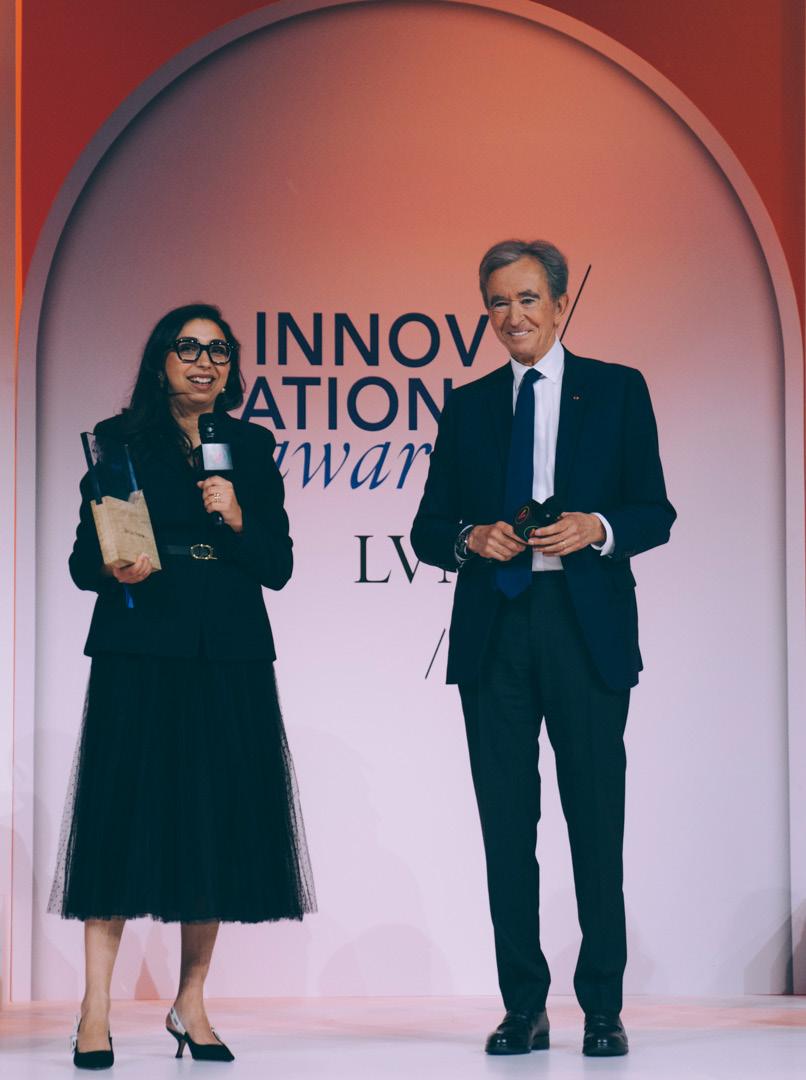


his year’s event took place in Paris from June 14-17, 2023. A cornerstone component of VivaTech is the LVMH Innovation Award and today we are proud to congratulate the winners and celebrate the nominees for 2023.
LVMH announced the winners for the 7th edition of the LVMH Innovation Award, during a ceremony that recognised seven startups. Following the jury’s deliberations, Bernard Arnault presented the Grand Prize to the startup Save Your Wardrobe, a tech-enabled clothing care and repair

platform. The awards ceremony was punctuated once again by the now expected presence of LIVI, LVMH’s innovation virtual ambassador.
With each successive edition, the LVMH Innovation Award bolsters its position as one of the premier prizes for startups, reflected in the record number of applications received this year. More than 1,300 startups from 75 countries were vying for this year’s award, with over 250 in the Sustainability & Greentech category.


Eighteen finalists proposing solutions with the potential to
shape the future of luxury were shortlisted and showcased in the “Dream Box,” LVMH’s pavilion during VivaTech. They competed in six distinct categories: Employee Experience, Diversity & Inclusion, Image & Media for Brand Desirability, Immersive Digital Experiences, Omnichannel & Retail, Operations Excellence, and Sustainability & Greentech.

" THE LVMH INNOVATION AWARD BOLSTERS ITS POSITION AS ONE OF THE PREMIER PRIZES FOR STARTUPS, REFLECTED IN THE RECORD NUMBER OF APPLICATIONS RECEIVED THIS YEAR"
Nominees:
Badger, Neobrain and Skilleo
Neobrain
Neobrain is a digital platform based on Artificial Intelligence to help companies allocate the right skills, to the right place, at the right time. Skills and motivations are at the heart of Neobrain, which responds to three key needs within organisations: foster employee engagement and retention; increase internal mobility; align employee skills with the company’s strategy. With its Intelligent APIs, Neobrain interacts with other HRIS, such as Workday, SAP SuccessFactors, Personio and Oracle, to name a few.
Nominees:
Bloom, Vidmob and Wizaly
VidMob
VidMob is the leading creative effectiveness platform for enterprise marketers. They use AI to analyse digital ads and offer actionable insights to make creatives work better.
Nominees:
Absolute Labs, Fosfor and Metav.rs
Absolute Labs
Absolute Labs has created the first blockchain analytics and web3 marketing automation platform. The aim is twofold. They help brands drive NFT pricing strategies based on relevant blockchain analytics. Also, by identifying market trends and carrying out relevant customer segmentations, they enable the automation of marketing campaigns to these customers via their wallets. This represents a new marketing channel tailored to a web3 audience.
Nominees:
Chatlabs, Ekoo and Save your Wardbrobe Save
Also winner of the Innovation Award Grand Prize.
Nominees:
Apollo Plus, Fabriq and LivingPackets
LivingPackets
LivingPackets kicked things off in December 2016 as a small research team developing THE BOX, based in Nantes, France. Since then, they’ve grown to a team of nearly 70 people. Their smart, secured and reusable packagings are protected with more than 40 patents and our flagship product THE BOX was named the “product with the greatest potential to change the world” at CES 2020 at Las Vegas.
Nominees:
Bioweg, Releaf Paper and Woola
Woola
Founded in 2020, Woola uses waste wool to replace plastic bubble wrap. The company’s products are used by retailers to ship fragile goods, from cosmetics and skincare to jewellery and fashion accessories. Headquartered in Tallinn, Estonia the company has raised a total of €3M in venture capital financing from Future Ventures, Lemonade Stand and a number of angel investors.
ChatLabs
At the end of the deliberations, Save Your Wardrobe was awarded the Grand Prix of the LVMH Innovation Award, alongside five other winners, as well as the winner of a special prize awarded for Data and Artificial Intelligence.

“Save Your Wardrobe joins the prestigious list of grand winners of the LVMH Innovation Award, all of whom have had an exemplary journey within the group, helping to make our Maisons ever more desirable and to offer the most striking experiences. Save Your Wardrobe also perfectly illustrates our ambition in creative circularity, a pillar of our environmental roadmap, LIFE 360. I am convinced that their solution will very quickly resonate with the aspirations of our Maisons and the expectations of our customers,” said Bernard Arnault, Chairman and CEO of the LVMH group.
YOUR WARDROBE WAS AWARDED THE LVMH INNOVATION AWARD, WINNERS, AS WELL AS THE WINNER AWARDED FOR DATA AND ARTIFICIAL
"SAVE
“The LVMH Innovation Award represents excellence, ingenuity and forward-thinking. To be selected as the winner among so many exceptional innovators is a testament to the unique value Save Your Wardrobe brings to the fashion and luxury world. This is a monumental milestone in our journey – one that will fuel our determination to keep pushing the boundaries of the luxury experience while preserving and extending the LVMH’s Maisons legacy”, said Hasna Kourda, Founder and CEO of Save your Wardrobe.
Save Your Wardrobe wins 2023 LVMH Innovation Award Grand Prize

The London-based startup, which also won the “Omnichannel & Retail” category, has developed a digital platform for care and repair as well as digital wardrobe management. Its services increase the lifespan of customers’
AWARDED THE GRAND PRIX OF AWARD, ALONGSIDE FIVE OTHER WINNER OF A SPECIAL PRIZE ARTIFICIAL INTELLIGENCE"
garments. Designed to match the individual needs of brands and retailers, the platform streamlines the post-purchase experience with seamless booking and management of aftercare services. It features integrated automated logistics, operational management, fluid customer communication and live data reporting.
Extremely flexible, Save Your Wardrobe can be integrated omnichannel: in-store, online or with brands’ existing CRM. The platform is able to onboard any in-house service providers or leverage a network of vetted clothing care specialists around the world.
Save Your Wardrobe will have a chance to benefit from personalised support for a full year at La Maison des Startups LVMH, the Group’s business acceleration programme at Station F in Paris.
All other LVMH Innovation Award winners are offered the opportunity

"SAVE YOUR WARDROBE WILL HAVE A CHANCE TO BENEFIT FROM PERSONALISED SUPPORT FOR A FULL YEAR AT LA MAISON DES STARTUPS LVMH"
to heighten their visibility and access the Group’s Maisons’ unique ecosystem. The Award creates a conduit for creating and accelerating collaborations between LVMH Maisons and promising startups motivated by the chance to explore new business models and new technologies.



Three practical steps towards responsible and effective use of AI their

On March 29, 2023, the UK Government released its plans to balance AI risks with innovation, taking its first step to harnessing the true potential of the technology.

he AI regulation whitepaper followed growing concerns around the ethical implications of generative AI and the government’s commitment to cement the UK as a world-leading hub for the technology by 2023. With the government announcing an initial £100 million investment, AI is set to raise global GDP by 7 per cent over a decade.
Whilst the whitepaper establishes a foundation, practical moves towards
responsible AI are more complicated and companies may not know where to begin.
Guidance from specific regulators remains vague and the translation of the broad whitepaper’s principles into tangible actions may be a stumbling block for many.
Here are three ways businesses can fill in the whitepaper gaps and develop their unique AI strategy responsibly and effectively.

Although AI regulation is being developed, such as the whitepaper and EU AI Act, implementation is yet to hit the mainstream. The whitepaper’s five principles: “safety, security and robustness,” “appropriate transparency and explainability,” “fairness,” “accountability and
governance” and “contestability and redress” are broad and subjective to companies, risking potential misinterpretation.
To enforce the rules, businesses must take action into their own hands. Firms should look to implement and embed personal AI codes of conduct and guidance into their own organisational cultures. Formalising AI model

development processes and incorporating ethics into AI governance mechanisms, for instance, requiring sign-offs for any changes to existing AI systems is an effective route towards responsible usage of the technology.
Flexibility can further foster an ethical environment.

Businesses must question the appropriateness of using AI for
a certain task. It is important to weigh up the pros and cons of whether it will generate the most suitable result when carrying out assessments of AI use cases and proposing new solutions.
Streamlining culture and cooperation:
Critical to channelling the potential of AI is having a
culture that embraces change and uses agile methods to introduce new ways of working. Everyone needs to understand the reasons behind and benefits of change, rather than fearing it.
It’s also important to have clear communication and designated roles within a company. Defining who is accountable for the outcome of a model and who is responsible for the technical decisions is essential for creating a successful team and encouraging careful thought when managing the technology.
As AI is a relatively new but flourishing field, legislation is everchanging and adaptability is inevitable. Cooperation between the public and

“Defining who is accountable for the outcome of a model and who is responsible for the technical decisions is essential for creating a successful team and encouraging careful thought when managing the technology”

private sector will be essential. Businesses must engage directly with the public sector by underscoring any regulations stifling AI development. The public sector simultaneously needs to be actively engaged with leading businesses and receptive to their evidence.
AI’s rapid acceleration has led to real societal and governmental
concerns. Italy recently banned OpenAI’s ChatGPT product, citing violation of the EU’s existing GDPR, and the Future of Life Institute called for a pause of at least six months of the training of AI systems.
With accusations against AI’s biased nature and its perceived threat to job security, the whitepaper adopted a socially conscious approach towards the

“Creating an AI model catalogue with a common AI metamodel is an effective tool”
technology. The regulation highlighted the need to restore public and employee trust, a crucial asset for business growth. A sole focus on profit can damage a business’s reputation and AI must incorporate this mindset. Considering a recent study by DotEveryone found 79 per cent of technology workers would like more practical resources to help them with ethical management, businesses can go one step further in ensuring transparency.

Maintaining company-wide AI literacy and greater internal education on technology is a useful step in the visibility process. Interactions with AI systems must be labelled, with clear processes for consumers to obtain information about the model or request a human review. Additionally, creating an AI model catalogue with a common AI metamodel is an effective tool.
Strive towards sustainability enhance your environmental credentials with our become carbon

sustainability and environmental our guide on how to carbon neutral.

o help you understand the different stages of achieving carbon neutrality through offsetting your carbon emissions via verified projects, we compiled a guide featuring four steps to help you achieve it.
There are several reasons why you shouldn’t delay starting your journey to becoming carbon

neutral. As pressure from consumers and stakeholders continues to mount on businesses, it is more important than ever that organisations start to explore how to reduce their carbon emissions and impact on the planet.
You may also want to begin your carbon offsetting journey now because carbon credit prices are expected to rise due to an increase in demand over the next few years. Avoid paying large amounts

for offsetting your carbon by taking those vital first steps.
Starting this journey sooner rather than later means that you can fulfil your customer’s requirements by improving your environmental credentials, elevating your reputation and becoming a leader in sustainability.
The first step in your journey to carbon neutrality is to understand your organisation’s current carbon emissions. This can take time and resources to analyse, with organisations needing to calculate and report on their scopes 1, 2 and 3 emissions. By understanding these emissions, businesses

“THE FIRST STEP IN YOUR JOURNEY TO CARBON NEUTRALITY IS TO UNDERSTAND YOUR ORGANISATION’S CURRENT CARBON EMISSION”
establish what they can reduce as part of their net zero strategy and which emissions are unavoidable and need to be mitigated by investing in carbon offsetting projects.
With projects that help businesses offset their emissions becoming increasingly popular, we recommend starting your journey as soon as possible.

With so many different offsetting schemes out there, it can be overwhelming when trying to find one that aligns with your organisation’s values and what you are looking to achieve.
Due to its current lack of regulation, the Voluntary Carbon Market is often referred to as the ‘wild west.’ To avoid choosing the wrong project, make sure you do your research.
Learning as much as possible about the projects you are interested in can help you understand how your carbon credits will be used. Establishing that the scheme is validated to the highest accreditation will mean you are investing in a verified project and will ensure your business avoids accusations of greenwashing.

These verifications include:
• Verified Carbon Standard (VCS)
• Gold Standard Voluntary Emission Reductions (VER)
• UK and EU Emissions Trading Standard (EU + UK ETS)
• United Nations Certified Emission Reductions (CER) programmes.

If you want to make sure that your carbon-neutral strategy and targets are of the highest standard, then we recommend getting your strategy verified.
By verifying that your carbon reduction strategy and carbon
offsetting investments are in line with the latest climate sciences, you are demonstrating that you are serious about being carbon neutral, that you are on track to reduce your emissions and avoid greenwashing accusations in the process.
Although there are different routes, we recommend doing
this through the Science Based Targets initiative (SBTi), which will verify your plan and target for reducing your greenhouse emissions, as long as they are in line with the goals of the Paris Agreement of limiting the Earth’s warming to 1.5C.
By getting this stamp of approval from the SBTi, you can future-proof your organisation’s growth, save money, gain resilience against regulation and boost confidence for customers, employees and stakeholders.
Now that your organisation has offset its residual carbon emissions, you can celebrate becoming carbon neutral.
While this is a great achievement, there is still more work to do. Becoming carbon neutral typically means that you will not increase your carbon emissions, so focusing on how you can keep your emissions down will play a key role in this journey.

If you already have a net zero strategy in place, then take this opportunity to begin implementing those projects in your plan and reducing your carbon emissions completely. However, if you have become carbon neutral but aren’t sure what the next steps are, now is the perfect time to start setting your net zero targets and plan out your strategy for reaching them.
It is important to remember that although becoming a carbon-neutral business is a great step in the right direction, it does not mean you have zero CO2 emissions.
Now that you are carbon neutral, it is time to use that as a solid foundation to start defining, shaping and creating a carbon reduction strategy. By working with a net zero consultancy, you can secure a plan to support you in meeting your next milestone: becoming a net zero organisation.
SOURCE: Team Energy

wiss hypersonic startup
Destinus was founded in 2021. Its mission? To redefine the future of air travel.
The aerospace startup, based in Vaud, Switzerland, is using cutting-edge technology to build hydrogen-powered aeroplanes. The aim is to forge a more sustainable future for air travel and goods transport by making long-range hypersonic flight part of everyday life in the near future.

Destinus is developing groundbreaking hybrid aircraft combining features of a rocket and aeroplane, fuelled by hydrogen,
opening up intercontinental travel in less than two hours and flights to the other side of the world in four hours.
The company has already secured more than €26 million for its innovative approach to air transport and travel, with offices spanning several European locations from France and Spain to Germany.
In March 2023, Destinus announced its participation in a strategic initiative with the Spanish Ministry of Science’s Centro para el Desarrollo Tecnológico e Industrial (CDTI) programme, to advance

and develop the use of hydrogen in aviation.
The CDTI chose the company to be part of its strategic initiative under its Plan de Tecnologías Aeronáuticas (PTA). The current investment stands at €12 million and the project involves Spanish universities, working alongside European companies and technology centres as well.
“We are delighted to have been awarded these grants, especially because they are a clear sign that
Destinus is aligned with the strategic lines of Spain and Europe to advance hydrogen flight,” said Davide Bonetti, VP Business Development and Products for Destinus.

“For deep tech companies like us, access to these EU recovery funds is essential to carry out advanced research and accelerate the innovation needed to be competitive on a global scale. With these grants, hydrogen-based solutions for aeronautical mobility will be one step closer to becoming a reality.”
For more information about Destinus and its mission to fly us into the future, visit their website destinus.ch
“Innovating aeronautics, propulsion and hydrogen tech for hypersonic aircraft, sustainable energy, mobility and security”
